Pakistan, India, and the border regions are home to crickets that look like they came straight out of a science fiction novel. These large, terrifying predators are ready to tear apart both their own and their enemies. 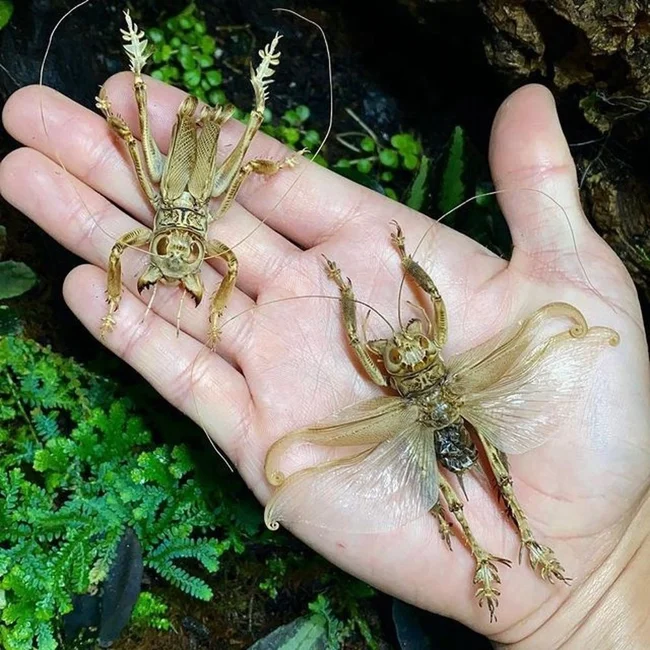
These are large, vicious predators with fearsome jaws and an unusual appearance. The strange growths and decorations all over their bodies make them look like steampunk toys.
Dune crickets grow large enough to frighten an insectophobe, but not large enough to eat one. The body of an adult cricket is approximately 4-5 centimeters long. If you extend its powerful legs with their paddle-like extensions, this length can be doubled. And if you count the antennae, the total length of an adult insect reaches 20 centimeters. 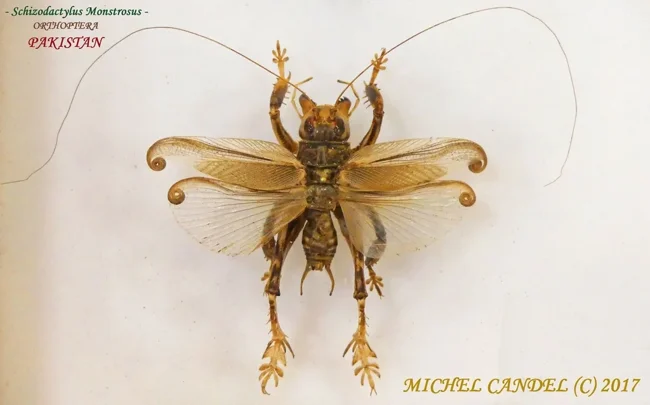
Envy of others' luxurious antennae is activated.
In addition to their extremely long antennae and slightly schizophrenic legs, crickets also have spiral wings. When not flying, the insect carefully coils its wings into spirals, which don't take up much space and don't interfere with hunting. Even when unfolded, the wings are still decorated with graceful spiral patterns at the tips. 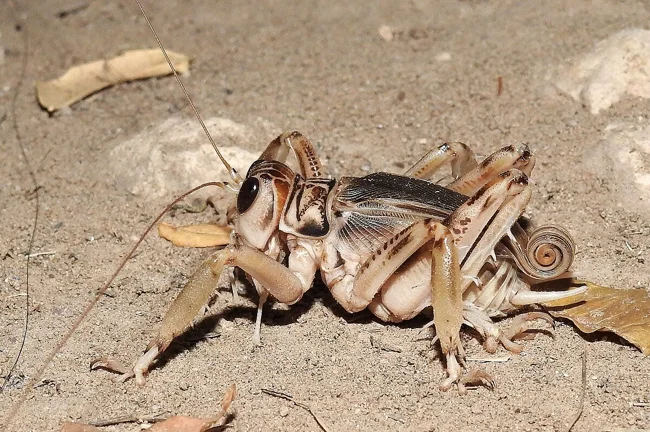
The spirals above the abdomen are compactly packed wings.
The dune cricket is an active nocturnal predator whose powerful mandibles cut through chitin and flesh with equal ease. In laboratory conditions, crickets readily feed on fish and meat, but in the wild, their diet consists primarily of ground beetles, grasshoppers, small frogs, and reptiles. Predatory crickets severely suppress the populations of some insects, but they themselves are suppressed by nocturnal insectivores: lizards, birds, mammals, and, most importantly, other dune crickets. 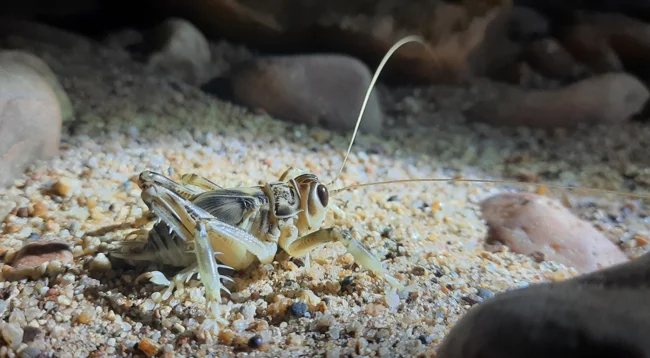
The Hunger Games have begun!
Cannibalism is an important food source and the crickets' primary mode of social interaction. Larger insects eat smaller ones without any hesitation. Yes, even larvae. What can I say, even larvae eat larvae. Dune crickets that are injured or lose limbs and unable to escape from other dune crickets quickly become food. 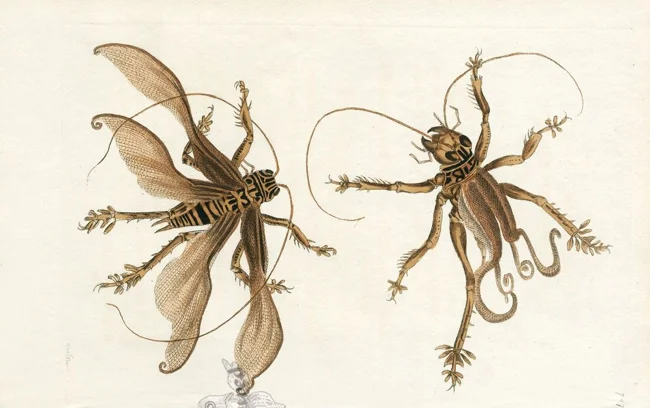
Biologists have appreciated the cricket's appearance and carnivorous tendencies, and have admired it for over 200 years. This drawing is from the "Naturalist's Collection," published in 1795.
They even mate quickly and nervously, as the mating pair is easy prey for other crickets. During mating, the pair forms a truce, which ends as soon as the insects scurry off to their burrows. There, in the safety, coolness, and high humidity, the female lays 20-25 eggs. 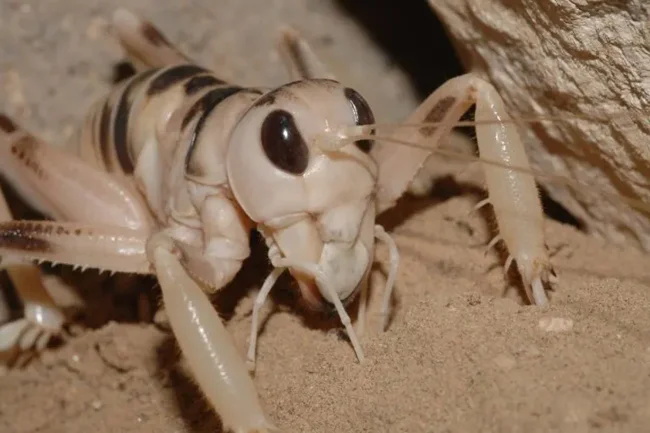
Rests viciously in safety.
But as soon as the babies hatch, they flee their home as fast as they can, because their mother is no longer their friend. Immediately after birth, the babies actively feed and disperse throughout the area, remaining, however, within desert regions and sandy shores. After all, it's easy to dig burrows there—the only place where crickets feel relatively safe and can wait out the day. 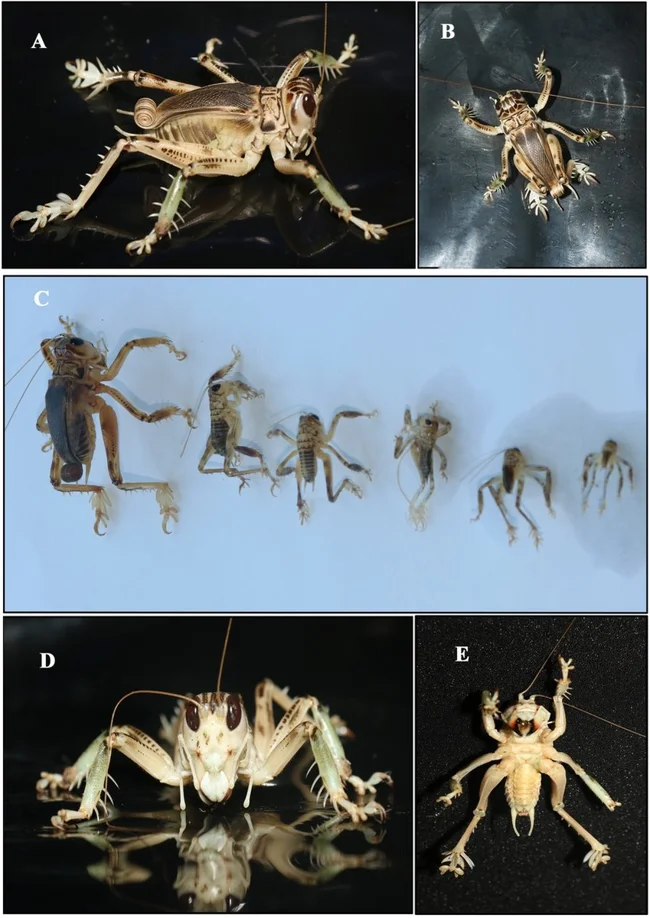
In the center, you can see an adult and larvae at various stages of development. Since Orthoptera are insects with incomplete metamorphosis, their larvae are very similar to adults, and there is no pupal stage.
They dig burrows with their mandibles and forelegs. The lobe-like extensions on them not only provide excellent traction in sand but are also good for digging tunnels. The insects push out the soil with their abdomen and powerful hind legs, which are equipped with identical lobes. Once the burrow is ready, the cricket settles in, ready to devour anyone who enters. Or die defending its property. 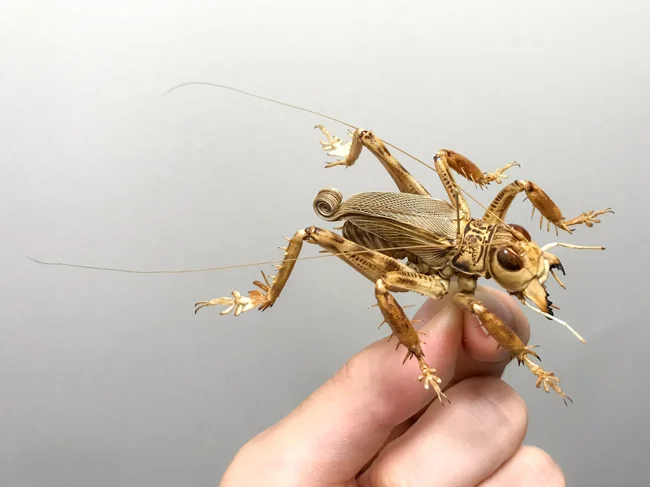
This particular cricket failed to protect the house. Well, at least it died in the name of science.
Unfortunately for the crickets, their habitat has become a trap. The use of sand in construction leads to the death of thousands of insects, which become an integral part of the concrete. As if that weren't enough, locals love to sell amulets made from dune crickets to tourists. And tourists are delighted to receive yet another unusual souvenir. The population of these nightmarish cannibals is rapidly declining.
Add your comment
You might be interested in:

























